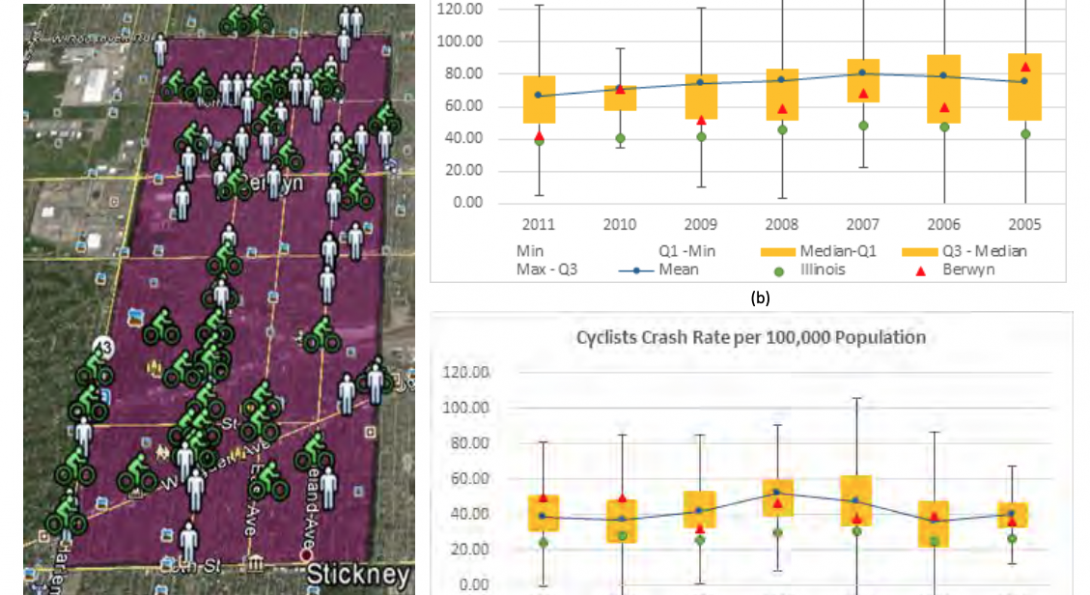Planning Guidelines Provide Resource to Rank and Measure Future Pedestrian and Cyclist Development Projects

Maximizing Scarce Funding Dollars Key Benefit from Research Produced by Urban Transportation Center at UIC
The process to determine the feasibility and value of new transportation improvement projects for pedestrians and cyclists can now be more efficient and equitable through recently developed guidelines that will let planners rank and measure the impact the proposed project will have on mobility within the immediate community.
Using the guidelines, transportation planners can analyze four criteria – whether the project is quantifiable, accessible and obtainable using commonly accepted transportation data, applicable and built during a prescribed schedule, and meritorious or critical – to measure its effectiveness and establish a ranking. Seven determinants involving safety, mobility, project cost and other factors contribute to the ranking process.
Governments that use the guidelines can identify and then prioritize projects most needed to improve walking and cycling; and, increasingly scarce transportation improvement funds are allocated to projects that are destined to get completed and do the most good.
The guidelines were developed from a research report, “Development of an Analytical Framework to Rank Pedestrian and Cyclist Projects,” completed by Dr. Nadereh Moini, former Research Assistant Professor at the Urban Transportation Center at the University of Illinois at Chicago.
The report comes at a time when a growing number of people are opting to walk or bike as a way to lead a healthier lifestyle and reduce or eliminate using personal automobiles as a way to get around.
As stated in the report: “It is apparent that improving cycling and walking facilities in areas where potential demands are evident such as urban areas provide an incentive for bikers, transit riders, and walkers to leave their cars at home and switch to these transportation modes. The communities that have been most successful at promoting walking and cycling provide facilities with specifications that exceed minimum national standards.”
Statistics were analyzed on the number and severity of pedestrian and cyclist accidents in six counties surrounding metropolitan Chicago from 2005 to 2011 to demonstrate the feasibility of project prioritization guidelines. Ten communities in Cook County, including Chicago, were identified as demonstrating the greatest need for improvement projects; examples cited include installation of a raised or high visibility crosswalk, new traffic signals, building a bike lane and construction of a “refugee island” for pedestrians.
The study was funded through the Center for Urban Transportation Research (CUTC) at the University of South Florida and the Illinois Department of Transportation’s Metropolitan Transportation Support Initiative (METSI) program.